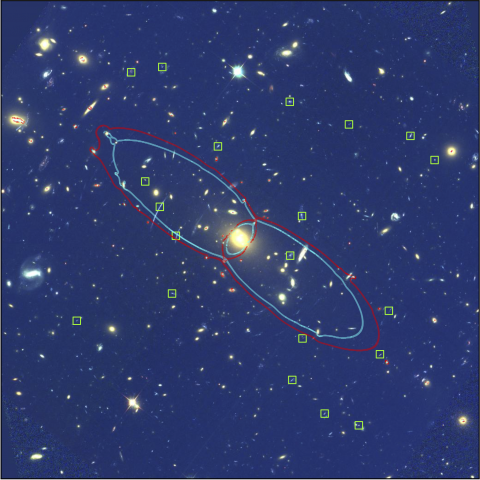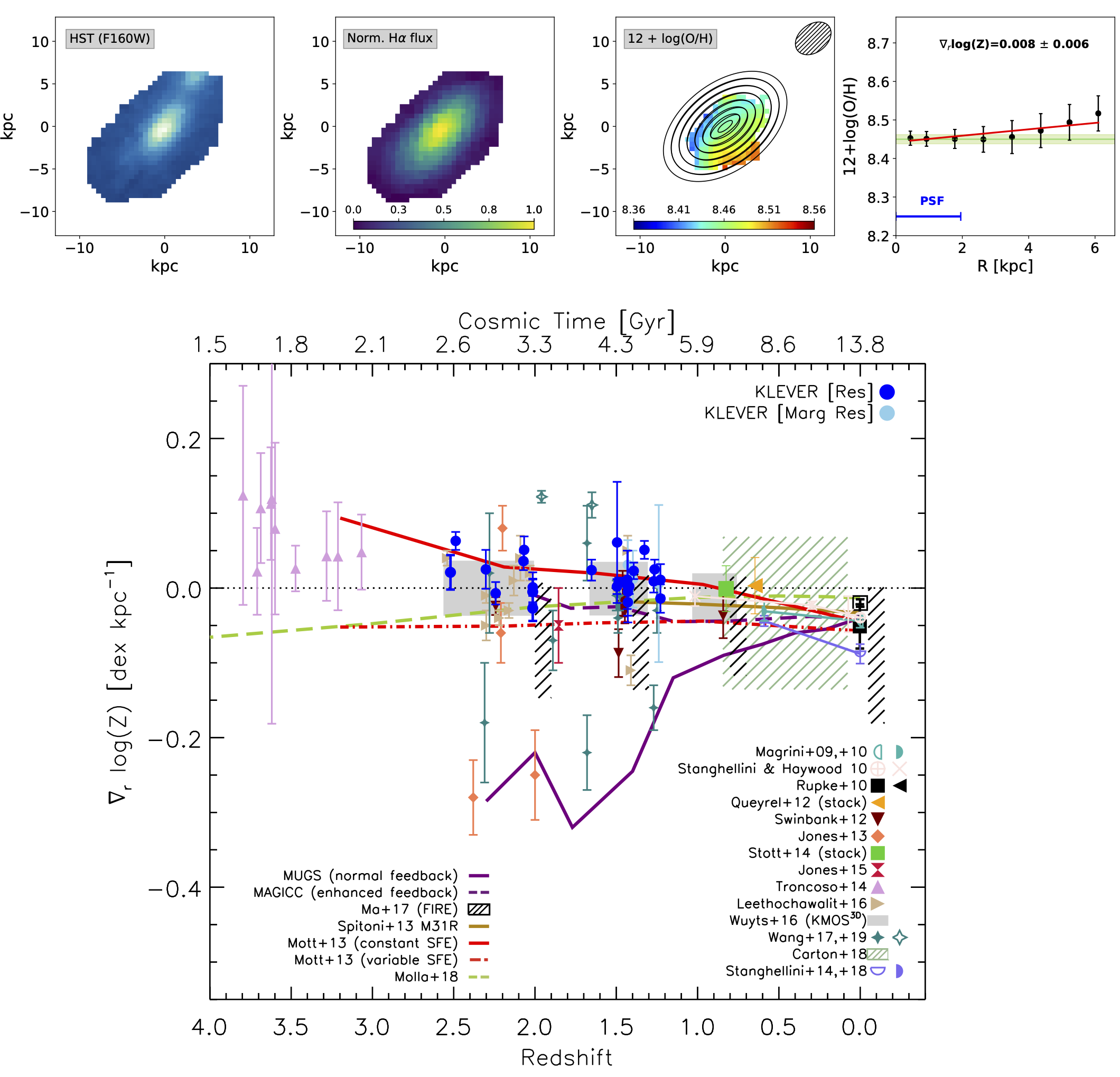
Submitted by Administrator on Fri, 13/12/2019 - 17:58
Galaxies at the ‘cosmic noon’ show no clear radial trends in the distribution of heavy elements, consistent with strong feedback mechanisms in place at these epochs, but does this always reflect a spatial homogeneity ?
New insights from the KLEVER Survey.
With the increased availability of integral field spectrographs, many studies in the last decade have focused on investigating the spatial distribution of heavy elements (so-called metals) within galaxies. Tracing the evolution of metallicity gradients across cosmic time indeed provides crucial informations for theoretical models aimed at describing the relative contributions that star formation, gas flows and feedback processes play in driving galaxy evolution. Although well characterised in the local Universe, with a large prevalence of galaxies whose central regions appear more enriched than the outskirts, the nature of metallicity gradients still remain poorly constrained at higher redshifts, due to the intrinsic challenges associated to poor angular resolution and the uncertainties affecting abundances diagnostics.
To get a step further in our understanding of such processes, a team of researchers including KAVLI scientists is currently leading a program (called KLEVER) which is aimed at exploiting the integral field spectroscopy in different near-infrared bands, as provided by the KMOS instrument on the VLT, to investigate the physical properties of ~200 galaxies at the so-called “cosmic noon”, the epoch comprised between cosmological redshifts of 1.5 and 2.5 (i.e. between 9.5 and 11.5 billion years ago).
In particular, in a recent work accepted for publication on Monthly Notices of the Royal Astronomical Society and led by Mirko Curti, postdoc researcher at the KICC, the team used the first available data from KLEVER to derive the metallicity properties and extract metallicity gradients in a sample of ~30 gravitationally lensed galaxies.
Adopting multiple emission line diagnostics enabled more robust constraints on the metallicity of the gas, whereas the magnification provided by foreground galaxy clusters boosted the effective spatial resolution achieved by the observations.
Overall, the researchers found that the vast majority of the sources are characterised by the presence of very weak, if not almost flat, metallicity gradients, in agreement with previous findings reported in the literature.
This “flatness” of metallicity gradients implies either that the build-up of stars, and therefore the subsequent metal enrichment, has occurred on similar timescales throughout the galaxy or, assuming a faster growth of the inner regions (the so called ‘inside-out’ scenario), that powerful winds must have been active in redistributing the gas across galaxies, a possibility often explored by different models and simulations.
Nonetheless, the presence of irregular patterns in many of the metallicity maps may also suggest that star formation and enrichment are governed by more stochastic process, as also pointed out by different studies conducted with the Hubble Space Telescope.
Read the full article for free here - https://arxiv.org/abs/1910.13451.

Fig.2 - Upper Panels: Reconstructed 'source plane' image, Hα flux map, metallicity map and metallicity gradient for one of the sources in the KLEVER sample. Bottom Panel: A collection of metallicity gradients from KLEVER and other literature studies are plotted as a function of redshift. The majority of high redshift measurements are consistent with predictions from models and simulation including strong winds and feedback mechanisms in place.


